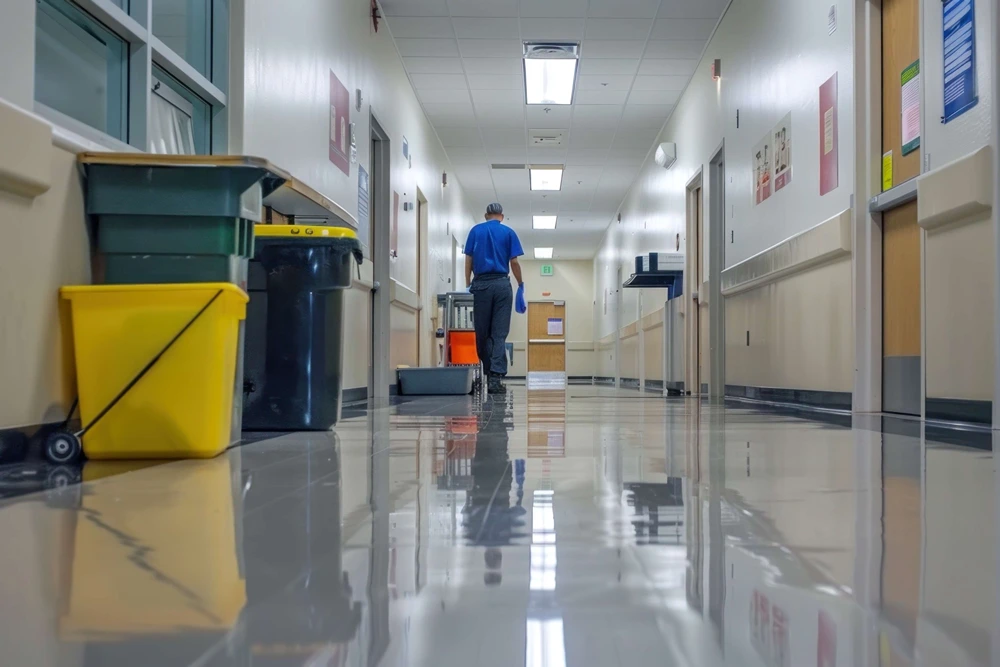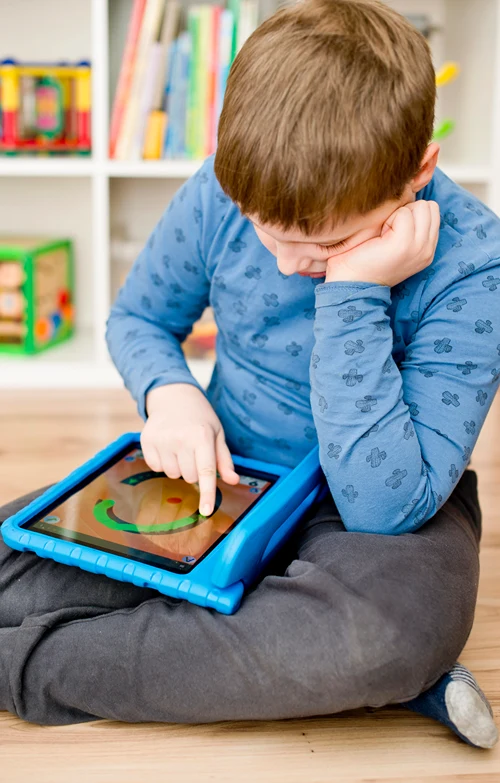School Cleaning Best Practices: How To Prevent Seasonal Illnesses
Influenza, common colds, and allergies may come for a season, but their effects can be far-reaching. Studies undertaken from 2011 to 2022 show that there were over 9,000 school closures in the United States over the period, thanks to influenza and influenza-like illness (ILI). [1]
As the wise adage says, prevention is better than cure. So, how do you get this right? Proper school cleaning is one great approach. But even then, you’ve got to be methodical about the whole process. How? Keep the following best practices in mind:
Have a Comprehensive Cleaning Schedule in Place
Cleaning to prevent seasonal illnesses demands a whole new level of meticulousness. In that case, focus your efforts on high-touch surfaces like door handles, light switches, desks, chairs, keyboards, shared equipment and bathroom fixtures.
Dedicate one day a week to deep cleaning. On this appointed day, focus on all classrooms, hallways, cafeterias, gyms, and common areas. Once a month or quarterly, depending on your plans, you can go deeper and do some carpet shampooing, HVAC system checks, and window cleaning.
This is a great way to ensure a consistently healthy environment. To take it one step further, consider working with experts offering professional cleaning for educational institutions. Getting experienced hands on board can guarantee that you get the cleaning process right from the word go and potentially keep seasonal illnesses at bay.
Promote Proper Hand Hygiene
Unsafe water, poor sanitation, and a lack of hygiene contribute to about 1.4 million deaths each year. Given how dire the situation is, doing the best you can to protect your students can go a long way. [2]
One way to do this is to place hand sanitizers with at least 60% alcohol content in high-traffic areas such as entrances, cafeterias, and classrooms. Students should sanitize their hands every chance they get.
Frequent handwashing can help too. Teach your students and members of staff the proper way to do it. Also, put reminders near sinks and restrooms so they can keep it at the top of their minds. Make sure that the bathrooms and classrooms are always stocked with soap, paper towels, and hand sanitizers.

Put Proper Ventilation in Play
Science puts it that the level of indoor air pollutants is two to five times higher than what’s found outside. In that case, having proper ventilation in place can help let the stale air out and let clean air in. [3]
Start by keeping the windows open when possible for proper airflow. Also, make sure that HVAC systems are working properly. If you’re using air purifiers, ensure they’re equipped with high efficiency particulate air (HEPA) filters.
Another approach is to reduce overcrowding, if possible. If you’ve got enough space, make sure to spread students out to minimize the spread of airborne pathogens.
Encourage Sick Students and Staff To Stay Home
Seasonal illnesses like the flu can spread like wildfire. To reduce the odds of that happening, have policies in place for when students and staff should stay home if they exhibit symptoms of illness.
That’s not to say that students should miss class, or staff, work, unless, of course, the situation is quite grave. You can have remote learning options for students to keep up with their classmates and a remote working arrangement for your staff.
Reduce Clutter To Simplify Cleaning
Clutter can make it easy to miss a spot when cleaning. That said, reduce or completely remove unnecessary items from classrooms and common areas.
When it comes to cleaning, go for non-toxic, eco-friendly solutions. This can protect your students and staff, particularly those with allergies or sensitivities.
Keep The School Community Engaged
Keeping your students healthy demands collaborative effort. Start by talking to parents and guardians. Educate them about the importance of vaccination, good hygiene practices, and keeping sick children at home.
You should also consider partnering with local health departments to promote vaccination campaigns. You can help spread information about flu shots, for example, and other relevant vaccines.
Finally, ask for feedback from all the parties (teachers, parents, and students) on how to improve cleanliness and reduce illness transmission. Adjust your cleaning processes based on this feedback.
Track It All
You’ve got to observe how illnesses evolve so you can prepare better next time the season comes around. Keep an eye out for updates from health authorities and adjust your cleaning protocols based on emerging threats.
Closing Thoughts
Proper school cleaning has the potential to not only keep the facility spick and span, but also to keep seasonal illnesses at bay. The best practices mentioned in this guide are a good place to start.
However, to make the best of this experience, work with pros with a spotless track record. Research the different service providers near you and settle for the one that best meets your school’s needs and budget.
Sources
1. “School closures due to seasonal influenza: a prospective data collection-based study of eleven influenza seasons—United States, 2011–2022”, Source: https://www.thelancet.com/pdfs/journals/lanam/PIIS2667-193X(24)00068-1.pdf
2. “Hygiene”, Source: https://data.unicef.org/topic/water-and-sanitation/hygiene/
3. “How big a problem is poor indoor air quality (IAQ) in schools?”, Source: https://www.epa.gov/iaq-schools/how-big-problem-poor-indoor-air-quality-iaq-schools













